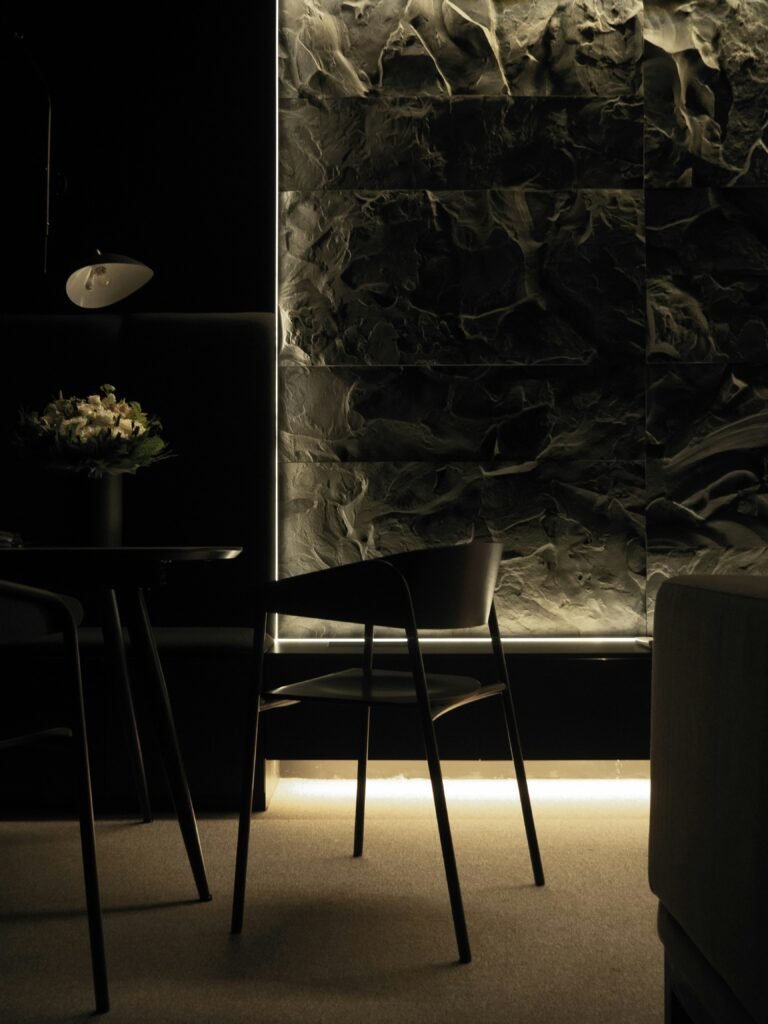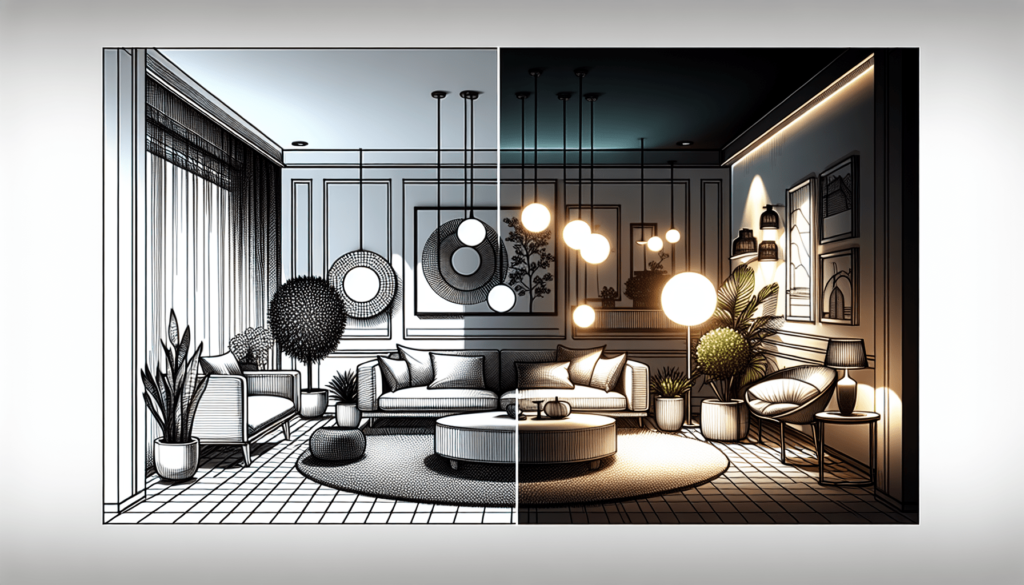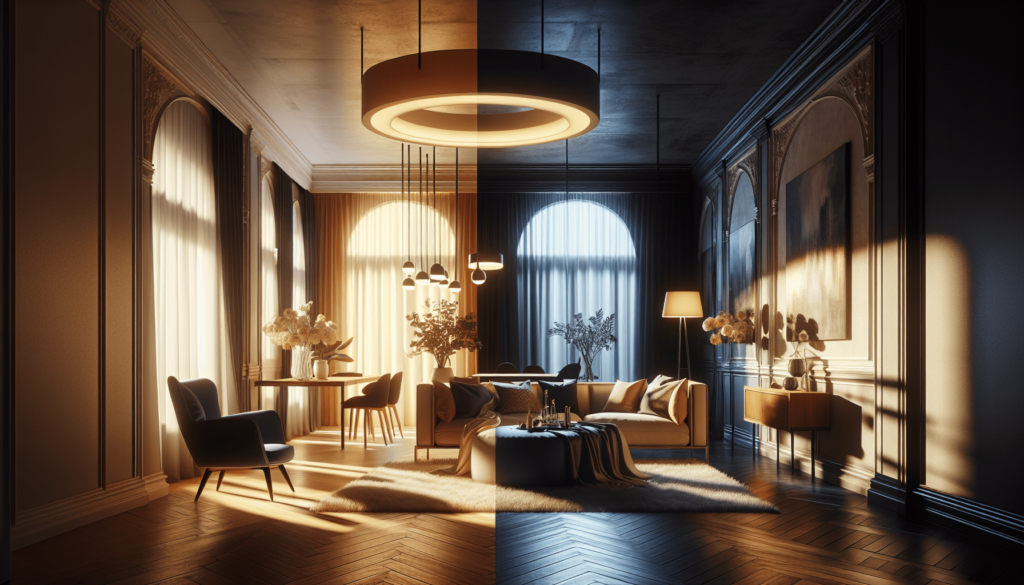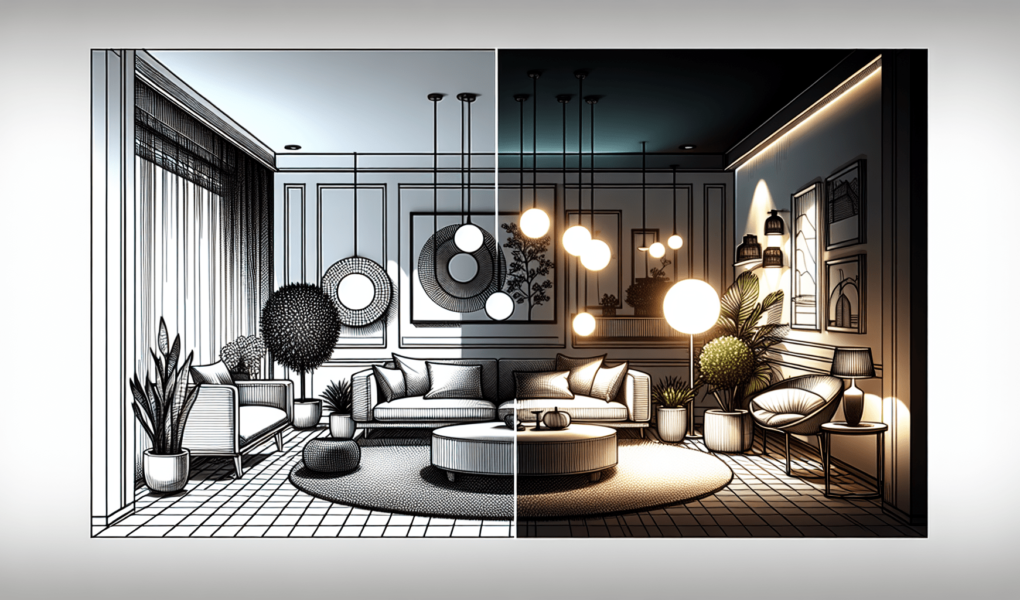Step into a world where lighting becomes the key player in setting the perfect mood. In the article “Creating Ambiance: Exploring Interior Lighting Schemes,” we delve into the transformative power of lighting and how it can make or break the ambiance of any space. From soft and romantic to bright and energetic, discover the various lighting techniques and schemes that can turn your home into a haven of tranquility or a vibrant hub of activity. Embark on a journey to explore the art and science behind interior lighting and unlock the secrets to creating a captivating atmosphere in any room.

Basics of Interior Lighting
Understanding the Importance of Interior Lighting
When it comes to interior design, lighting is a crucial element that can drastically transform the look and feel of a space. It not only provides illumination but also sets the mood and ambiance. Understanding the importance of interior lighting is essential in creating a well-designed and functional space.
Types of Interior Lighting
There are various types of interior lighting that serve different purposes. Understanding these types can help you make informed decisions when designing your lighting plan. General lighting, also known as ambient lighting, provides overall illumination to a room and is typically provided by ceiling-mounted fixtures or recessed lights. Task lighting, on the other hand, is focused lighting that helps you perform specific activities such as reading or cooking. It can be achieved through table lamps or under-cabinet lighting. Lastly, accent lighting is used to highlight specific features or objects in a room, creating visual interest and depth.
Creating a Lighting Plan
Assessing the Space and Functionality
Before diving into the specifics of your lighting plan, it’s important to assess the space and its functionality. Consider the size of the room, its layout, and the primary activities that will take place in the space. This will help you determine the appropriate lighting levels and types needed.
Determining the Lighting Needs
Each space has different lighting needs based on the activities that will be carried out in that area. For example, a kitchen will require focused task lighting for food preparation, while a living room may need a combination of ambient and accent lighting to create a warm and inviting atmosphere. Take into account the purpose of each space to determine the lighting needs accurately.
Considering Natural Light Sources
Natural light is a valuable resource in interior lighting design. Take note of the natural light sources in the room, such as windows and skylights. Consider how these sources can be utilized to maximize natural lighting during the day. This will not only enhance the aesthetic appeal but also reduce the reliance on artificial lighting.
Selecting the Right Fixtures
Choosing the right lighting fixtures is crucial to achieve the desired ambiance and functionality. Consider the style of the space and select fixtures that complement the overall design. From pendant lights and chandeliers to wall sconces and recessed lights, there is a wide range of fixtures available to suit any taste and budget. Ensure that the fixtures you choose are appropriate for the size of the room and provide adequate lighting.

Layering Light in Different Spaces
General Lighting for Overall Illumination
General lighting, also known as ambient lighting, is the foundation of any interior lighting plan. It provides overall illumination to a space and helps create a welcoming and comfortable environment. Ceiling-mounted fixtures, such as chandeliers or recessed lights, are commonly used to achieve general lighting. Consider the size and height of the room when selecting the appropriate fixtures.
Task Lighting for Specific Activities
Task lighting is essential in areas where specific activities are carried out, such as reading, cooking, or working. It provides focused lighting to illuminate the task at hand. Table lamps, floor lamps, or under-cabinet lighting are commonly used for task lighting. Position the fixtures strategically to avoid shadows or glare that may hinder the activity.
Accent Lighting to Highlight Features
Accent lighting is used to highlight specific features or objects in a room, adding depth and visual interest. It can be used to draw attention to artwork, architectural details, or decorative elements. Track lighting, wall sconces, or adjustable recessed lights can be employed for accent lighting. Experiment with different angles and intensities to create the desired effect.
Choosing the Right Bulbs and Color Temperature
Understanding Different Bulb Types
When it comes to selecting the right bulbs for your lighting fixtures, there are several options to choose from. Incandescent bulbs, although less energy-efficient, provide warm and soft lighting. Halogen bulbs are brighter and more efficient. Compact fluorescent lights (CFLs) and light-emitting diode (LED) bulbs are popular choices due to their energy efficiency and longevity.
Factors to Consider When Choosing Bulbs
Several factors should be considered when choosing bulbs for your lighting fixtures. The wattage determines the brightness of the bulb, so consider the desired level of illumination for each space. Color rendering index (CRI) measures how accurately a light source renders colors, so opt for bulbs with a high CRI for more accurate and vibrant colors. Additionally, consider the bulb’s lifespan and energy efficiency to minimize maintenance and environmental impact.
Exploring Different Color Temperatures
Color temperature refers to the perceived warmth or coolness of a light source. It is measured in Kelvin (K). Lower Kelvin temperatures (2700K-3000K) provide warm and cozy lighting, while higher Kelvin temperatures (5000K-6500K) give off cool and crisp lighting. Consider the mood and ambiance you want to create when selecting the color temperature for each space.

Incorporating Natural Light
Maximizing Natural Light Sources
Harnessing natural light not only reduces the reliance on artificial lighting but also enhances the overall aesthetic appeal of a space. Maximize natural light sources by utilizing window placement, skylights, or light tubes. Opt for lighter window treatments, such as sheer curtains or blinds, to allow ample natural light to filter in. Additionally, consider the layout and arrangement of furniture to ensure that natural light is not hindered.
Window Treatments for Light Control
While natural light is desirable, there may be instances where you need more control over the amount of light entering a room. Window treatments, such as curtains, blinds, or shades, can help regulate the amount of natural light and privacy. Choose treatments that can be adjusted to let in the desired amount of light while still complementing the overall design of the space.
Designing Lighting for Specific Rooms
Living Room Lighting Ideas
The living room is a space where various activities take place, from entertaining guests to watching movies or reading. It requires a combination of general, task, and accent lighting. Consider using a combination of ambient ceiling lights, floor lamps, and table lamps to provide overall illumination, focused lighting, and accent lighting, respectively.
Kitchen Lighting Ideas
In the kitchen, task lighting is of utmost importance for food preparation. Under-cabinet lighting, track lighting, or pendant lights are commonly used to provide focused lighting on countertops and work areas. Combine this with general ambient lighting to create a well-lit and functional kitchen.
Bedroom Lighting Ideas
In the bedroom, it is essential to create a relaxing and cozy atmosphere. A combination of ambient and task lighting can help achieve this. Consider using a combination of overhead fixtures with dimmable bulbs, bedside table lamps, and wall sconces for functional and mood-enhancing lighting.
Bathroom Lighting Ideas
The bathroom requires a combination of general and task lighting. Vanity lighting is crucial for tasks like grooming and applying makeup. Wall sconces or vertical fixtures on either side of the mirror provide even and shadow-free lighting. Combine this with ambient lighting for a well-lit and inviting bathroom.
Home Office Lighting Ideas
A well-lit home office is essential for productivity and focus. Consider placing task lighting, such as a desk lamp or adjustable floor lamp, to provide focused lighting on your work area. Combine this with ambient lighting, such as overhead fixtures, to ensure the entire space is adequately illuminated.

Using Lighting as Decorative Elements
Statement Fixtures as Focal Points
Lighting fixtures can serve as decorative elements and focal points in a room. Statement fixtures, such as chandeliers or pendant lights, can add visual interest and act as a centerpiece. Choose fixtures that complement the overall style and design of the space.
Creating Ambiance with LED Strips
LED strips are versatile lighting options that can create a unique ambiance in any room. They can be installed under cabinets, along shelving, or behind furniture to provide subtle and indirect lighting. LED strips come in various colors and can be dimmed to create the desired mood.
Using Wall Sconces and Picture Lights
Wall sconces and picture lights are not only functional but also decorative lighting options. They can be used to highlight artwork, photographs, or architectural features. Choose fixtures that blend well with the overall design of the space and provide the desired level of illumination.
Implementing Smart Lighting Systems
Benefits of Smart Lighting
Smart lighting systems offer numerous benefits when it comes to interior lighting. They provide convenience and control, allowing you to adjust the lighting levels and settings remotely. Smart lighting can help save energy by automatically adjusting the brightness and turning off lights when not in use. Additionally, they can create personalized lighting scenes and schedules to enhance the overall ambiance of the space.
Different Types of Smart Lighting Controls
There are various types of smart lighting controls available, depending on your needs and preferences. Smart bulbs, smart switches, and smart dimmers are popular options. Smart bulbs can be controlled through mobile apps or voice assistants, offering flexibility in adjusting brightness and color temperature. Smart switches and dimmers replace existing switches and allow for remote control and automation.
Integration with Home Automation Systems
Smart lighting can be integrated with home automation systems to offer a seamless and centralized control system. Through a centralized hub or mobile app, you can control not only your lighting but also other smart devices in your home. Integration with home automation systems offers convenience and enhances the overall functionality and efficiency of your lighting setup.

Lighting for Different Design Styles
Modern and Minimalist Lighting
Modern and minimalist design styles often favor clean lines and simplicity. Opt for sleek and streamlined lighting fixtures that blend seamlessly with the overall aesthetic. Recessed lights, track lighting, or pendant lights with simple and understated designs are popular choices.
Traditional and Classic Lighting
Traditional and classic design styles often embrace ornate and decorative lighting fixtures. Chandeliers, wall sconces with intricate details, or table lamps with traditional lampshades can elevate the elegance and sophistication of the space.
Industrial and Rustic Lighting
Industrial and rustic design styles often feature raw and exposed materials. Lighting fixtures that incorporate industrial-inspired elements, such as metal finishes or exposed bulbs, can enhance the aesthetic. Pendant lights with wire cages, pipe-inspired wall sconces, or reclaimed wood chandeliers are common choices.
Eclectic and Bohemian Lighting
Eclectic and bohemian design styles allow for creativity and a mix of different elements. Mix and match various lighting fixtures that reflect your personal style and taste. Consider using colorful pendant lights, Moroccan-inspired lanterns, or mismatched table lamps for a unique and eclectic look.
Maintenance and Upkeep of Lighting Fixtures
Cleaning and Dusting
Regular cleaning and dusting are essential in maintaining the appearance and functionality of your lighting fixtures. Dust and dirt can accumulate on surfaces and affect the quality of light. Use a soft cloth or duster to clean the fixtures, and avoid using abrasive cleaners that may damage the surfaces.
Replacing Bulbs and Fixtures
Over time, bulbs may burn out or fixtures may become outdated. It is important to check and replace bulbs as needed to ensure proper illumination. If a fixture becomes damaged or no longer suits the design, consider replacing it with a new one that meets your current lighting needs and aesthetic preferences.
In conclusion, interior lighting plays a vital role in creating a well-designed and functional space. By understanding the importance of interior lighting, creating a lighting plan, layering different types of light, choosing the right bulbs and color temperature, incorporating natural light, and utilizing lighting as decorative elements, you can transform any space into a well-lit and inviting environment. Additionally, with the advent of smart lighting systems, you can enjoy the benefits of convenience and energy efficiency. Different design styles offer unique lighting opportunities, and proper maintenance and upkeep ensure longevity and optimal performance of your lighting fixtures. So, why wait? Start exploring and experimenting with interior lighting schemes to create the perfect ambiance in your own space.



